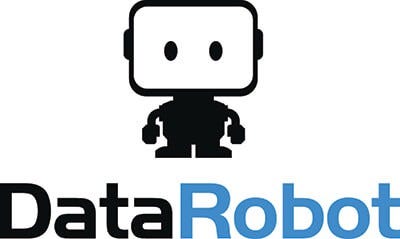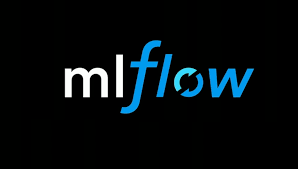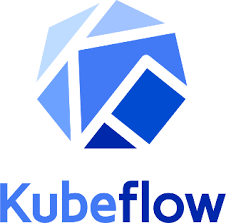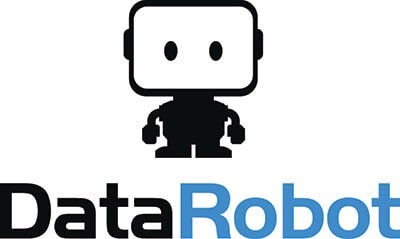5 Great MLOps Tools to Launch Your Next Machine Learning Model
And Is Data Science Dead In 10 Years? - Community Update #29
Did you know that $28.5 billion were spent on investing in machine learning projects, tools, and employees in 2019?
Machine learning has taken over pretty much every industry, owing to the automation and flexibility it is bringing to work. Companies of all sizes are using tools and cloud services like AWS Comprehend and other similar services to improve their business workflows and create new products.
However, one of the concepts that is slightly newer and proving to be helpful in complex machine learning deployment environments is MLOps.
Is the suffix “Ops” a little overused? Yes.
But MLOps has its place in the technology world. It’s actually a sign of a maturing discipline. As best practices on machine learning model management and deployment become more crystalized, it becomes much easier to develop automated platforms that can manage many of the mundane and error-prone steps in your machine learning workflow.
That’s why there are a lot of products flooding the market these days trying to vie for your attention. There are open source MLOps options as well as enterprise solutions.
Some are very focused on one step in the machine learning model deployment workflow, while others try to manage the entire process.
In today’s article, we will discuss how machine learning is being automated through the use of DevOps and the five best tools for doing it.
What Is MLOps?
MLOps has several similarities to DevOps, except instead of focusing on deploying and managing purely code, the focus is on deploying and managing models. When it comes to machine learning, you are focused on testing outcomes, managing edge cases, and training statistical models and neural networks along with the testing of data.
With DevOps, once your code is written and checked, the code is integrated into the CI. However, in the case of MLOps, this doesn’t work since we have to run tests and modify models accordingly. Since the process requires testing and training in the loop, MLOPs is built to facilitate retesting.
5 Great Tools for MLOps
1. MLflow
With tools such as MLflow, data professionals can now automate sophisticated model tracking with ease. MLflow debuted at the 2018 Spark + AI Summit and is yet another Apache project. MLflow allows data scientists to automate model development. Through MLflow, the optimal model can be selected with greater ease using a tracking server. Parameters, attributes, and performance metrics can all be logged to this server and can then be used to quickly quarry for models that fit particular criteria.
Although MLflow is a powerful tool for sorting through logged models, it does little to answer the question of what models should be made. This is a bit more of a difficult question because depending on your model, training may take a sizable amount of resources, hyper-parameters could be unintuitive, or both. Even these problems can, in part, be automated away.
2. Pachyderm
Pachyderm is a data science platform that combines end-to-end pipelines with data lineage on Kubernetes. This platform works on enterprise-scale to add the foundation for any project. The process starts with data versioning combined with data pipelining, which results in data lineage and ends with deploying machine learning models.
It not only tracks your data revisions but also the associated transformations. Furthermore, Pachyderm clarifies the transformation dependencies as well as data lineage. It delivers version control for data using data pipelines that keep all your data up to date.
3. Kubeflow
Kubeflow is a machine learning platform that manages deployments of ML workflows on Kubernetes. The best part of Kubeflow is that it offers a scalable and portable solution.
This platform works best for data scientists who wish to build and experiment with their data pipelines. Kubeflow is also great for deploying machine learning systems to different environments in order to carry out testing, development, and production-level service.
Kubeflow was started by Google as an open source platform for running TensorFlow. So it began as a way to run TensorFlow jobs via Kubernetes but has since expanded to become a multi-cloud, multi-architecture framework that runs entire ML pipelines. With Kubeflow, data scientists don’t need to learn new platforms or concepts to deploy their application or deal with networking certificates, etc. They can deploy their applications simply like on TensorBoard.
4. DataRobot
DataRobot is a very useful AI automation tool that allows data scientists to automate the end-to-end process for deploying, maintaining, or building AI at scale. This framework is powered by open source algorithms that are not only available on the cloud but also on-premise. DataRobot allows users to empower their AI applications easily and quickly in just ten steps. This platform includes enablement models that focus on delivering value.
DataRobot not only works for data scientists but also non-technical people who wish to maintain AI without having to learn the traditional methods of data science. So, instead of having to spend loads of time developing or testing machine learning models, data scientists can now automate the process with DataRobot.
The best part of this platform is its ubiquitous nature. You can access DataRobot anywhere via any device in multiple ways according to your business needs.
5. Algorithmia
Lastly, one of the most popular MLOps tools is definitely Algorithmia. This framework uses artificial intelligence to productionize a different set of IT architectures. This service enables the creation of applications to use of community-contributed machine learning models. Besides that, Algorithmia offers accessibility to the advanced development of algorithmic intelligence.
Currently, this platform has over 60,000 developers with 4,500 algorithms.
Founded in 2014 by two Washington-based developers, Algorithmia currently employs 70 people and is growing rapidly.
This platform not only allows you to deploy models from any framework or language but also connect to most of the data sources. It is available on both cloud and on-premises infrastructures. Algorithmia enables users to continuously manage their machine learning lifecycles with testing, securing, and governing.
The main goal is to achieve a frictionless route to deployment, serving, and management of machine learning models.
Conclusion
In today’s era, machine learning has become integrated into almost every single piece of technology and software that we use.
Therefore, data science is no longer a single person. In fact, it is a whole organization. In order to make integration and collaboration easier, we require MLOps that not only allow data scientists to tackle more problems but also make the development of models easier.
Thanks To The SDG Community
I started writing this weekly update more seriously about 15-16 weeks ago. Since then I have gained hundreds of new subscribers as well as 30 supporters! I even got 25 special thanks on Youtube!
And all I can say is, Thank You!
You guys are keeping me motivated.
Also, if you’re interested in reading some of our past issues such as Greylock VC and 5 Data Analytics Companies It Invests or The Future Of Data Science, Data Engineering
Then consider subscribing and supporting the community!
Video Of The Week - What I Learned From 100+ Data Engineering Interviews - Interview Tips
Data engineering interviews are tough.
Interviewing for any technical position generally requires preparing, studying, and long, all-day interviews.
Data engineering interviews, like other technical interviews, require plenty of preparation.
There are a number of subjects that need to be covered in order to ensure you are ready for back-to-back questions.
Here is what I learned from being an interviewer for 100+ interviews.
Articles Worth Reading
There are 20,000 new articles posted on Medium daily and that’s just Medium! I have spent a lot of time sifting through some of these articles as well as TechCrunch and companies tech blog and wanted to share some of my favorites!
Is Data Science Dead in 10 Years?
Is data science dying? Is the data science job oversaturated? Is it too late to get into data science?
Recently, these are the most frequently asked questions on Ken Jee’s YouTube, Twitter, LinkedIn, and even Instagram.
These questions appear to stem from three main sources of doubt:
They think that the “trend of data science” is over and society is onto the next biggest thing
They hear that many data science tasks may be automated, so they believe automation will replace the need for data science skills
They think that data science jobs will be oversaturated
In this article, Ken assess if there is any truth to these claims. Ken also does his best to clarify what this means for data scientists and job hunters alike.
Snowflake Claims Similar Price/Performance to Databricks, but Not So Fast! (A little bit of drama)
On Nov 2, 2021, we announced that we set the official world record for the fastest data warehouse with our Databricks SQL lakehouse platform. These results were audited and reported by the official Transaction Processing Performance Council (TPC) in a 37-page document available online at tpc.org. We also shared a third-party benchmark by the Barcelona Supercomputing Center (BSC) outlining that Databricks SQL is significantly faster and more cost effective than Snowflake.
A lot has happened since then: many congratulations, some questions, and some sour grapes. We take this opportunity to reiterate that we stand by our blog post and the results: Databricks SQL provides superior performance and price performance over Snowflake, even on data warehousing workloads (TPC-DS).
Industry Benchmarks and Competing with Integrity
When we founded Snowflake, we set out to build an innovative platform. We had the opportunity to take into account what had worked well and what hadn’t in prior architectures and implementations. We saw how we could leverage the cloud to rethink the limits of what was possible. We also focused on ease of use and building a system that “just worked.” We knew there were many opportunities to improve upon prior implementations and innovate to lead on performance and scale, simplicity of administration, and data-driven collaboration.
In the same way that we had clarity about many things we wanted to do, we also had conviction about what we didn’t want to do. One such thing was engaging in benchmarking wars and making competitive performance claims divorced from real-world experiences. This practice is simply inconsistent with our core value of putting customers first.
End Of Day 29
Thanks for checking out our community. We put out 4 Newsletters a week discussing data, tech, and start-ups.
If you want to learn more, then sign up today. Feel free to sign up for no cost to keep getting these newsletters.








